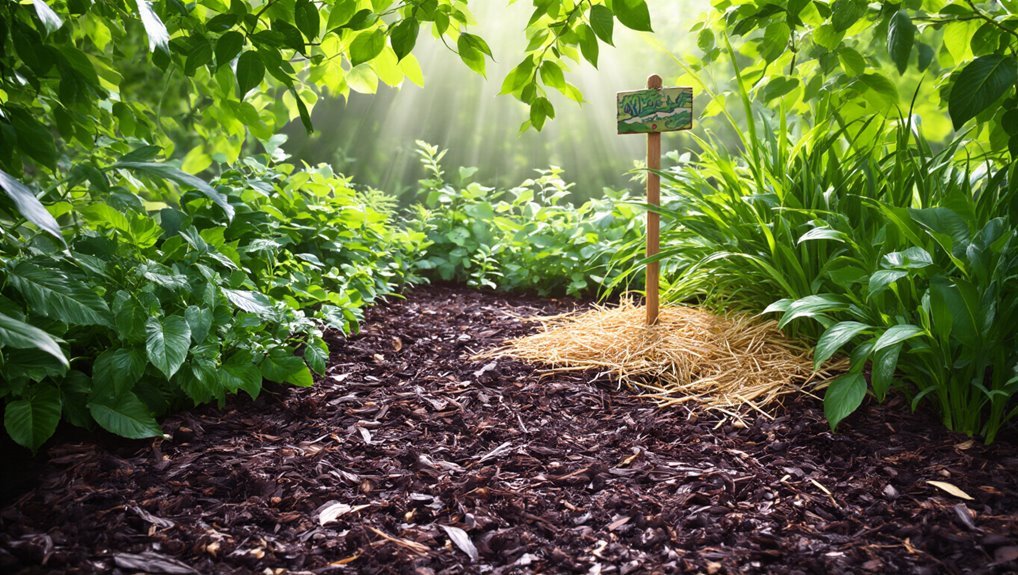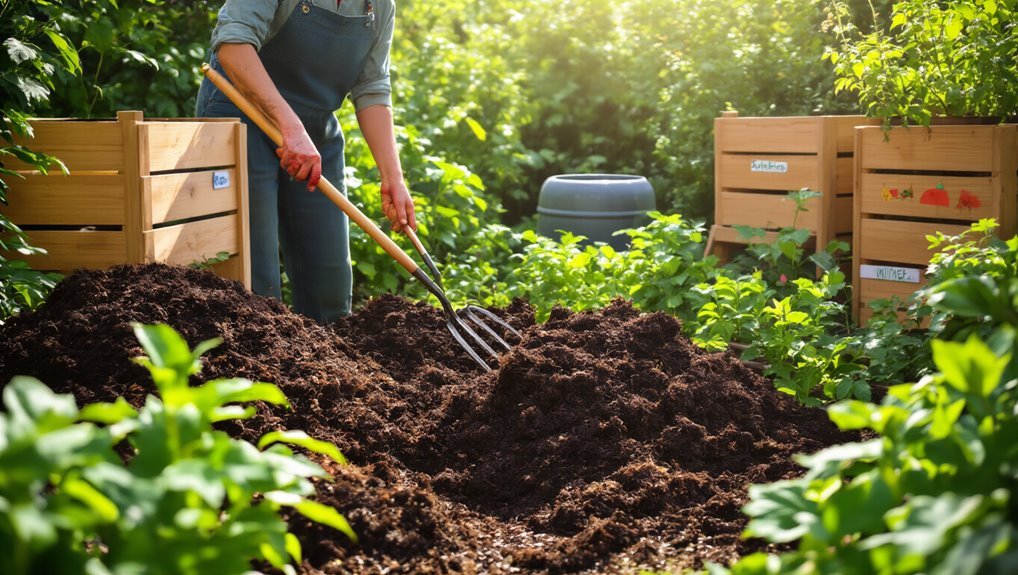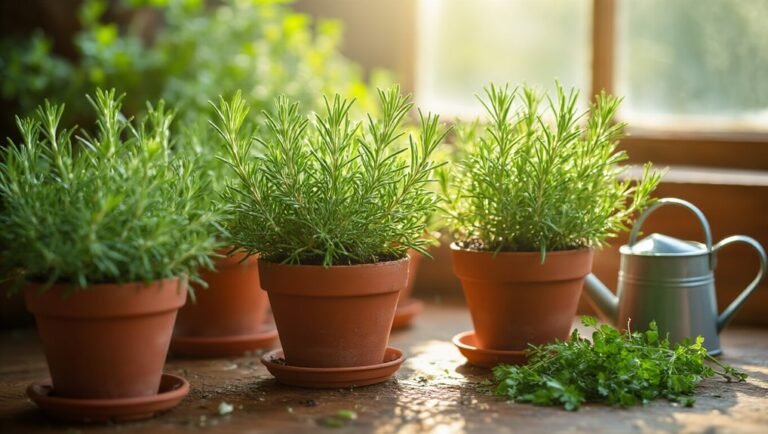For easy soil conservation in your home garden, start by implementing mulching techniques—use organic materials like straw or wood chips to retain moisture and suppress weeds. Next, practice crop rotation to improve soil health and reduce pests by alternating your crops each season. Lastly, utilize composting methods to recycle kitchen scraps into nutrient-rich soil. These simple steps can boost your garden’s vitality and sustainability. You’ll discover more tips to enhance your gardening skills ahead.
Key Takeaways
- Apply a 2 to 4-inch layer of mulch around plants to retain moisture and suppress weeds effectively.
- Rotate crops each season to enhance soil health and reduce pest infestations.
- Start a compost bin for kitchen scraps and yard waste to enrich your garden soil.
- Use organic materials like straw or wood chips as mulch to improve soil structure over time.
- Regularly maintain your mulch and compost to ensure they provide ongoing benefits for your garden.
Implement Mulching Techniques

Although mulching may seem like a simple task, it’s one of the most effective techniques for conserving soil moisture and preventing erosion in your home garden. By covering the soil with organic materials like straw, wood chips, or grass clippings, you create a protective barrier.
This layer not only retains moisture but also suppresses weeds, reducing competition for nutrients. Mulch also improves overall soil health by moderating soil temperature and gradually adding organic matter as it decomposes.
When you apply mulch, make sure to leave space around plant stems to avoid rot. Aim for a thickness of 2 to 4 inches for optimal effectiveness.
As the mulch breaks down, it enriches the soil, promoting healthy plant growth. Regularly check the mulch layer, replenishing it as needed to maintain its benefits throughout the growing season.
You can further enhance your garden by choosing Organic Mulching Materials such as straw, which are available for purchase and are ideal for maintaining healthy, resilient soil.
Practice Crop Rotation
Since practicing crop rotation can significantly enhance soil health, it’s a strategy every gardener should consider.
By changing the types of crops you grow in each section of your garden each season, you can improve soil fertility and reduce pest infestations. For example, if you plant legumes one year, they’ll fix nitrogen in the soil, benefiting the next crop.
Rotate with crops like tomatoes or peppers that thrive on that added nitrogen. This not only keeps your soil nutrient-rich but also disrupts pest life cycles. Incorporating seed starting kits into your gardening routine can make it easier to plan and manage successful crop rotations each season.
You won’t have to rely as heavily on chemical fertilizers or pesticides, making your garden healthier and more sustainable.
In addition to crop rotation, using the best plant food options can further nourish your plants and support long-term soil vitality.
Utilize Composting Methods

Composting transforms kitchen scraps and yard waste into nutrient-rich organic matter, enriching your soil and promoting healthy plant growth. Start by collecting fruit and vegetable peels, coffee grounds, and leaves in a designated compost bin. Turn your compost regularly to aerate it and speed up decomposition. In just a few months, you’ll have dark, crumbly compost ready to mix into your garden beds.
This not only improves soil structure but also helps retain moisture and suppress weeds. By incorporating compost, you’re recycling waste and boosting your garden’s vitality—an easy win for both your plants and the environment! For the most effective results, consider using compost bins designed specifically for home gardens to streamline your composting process and keep your space tidy. You can find a variety of outdoor composting systems that make starting and maintaining your compost pile simple and efficient.
Frequently Asked Questions
How Can I Make My Own Mulch at Home?
To make your own mulch at home, collect organic materials like grass clippings, leaves, or wood chips. Shred them into smaller pieces, then layer them around your plants to conserve moisture and suppress weeds.
What Crops Are Best for Rotation in Small Gardens?
Think of crop rotation as a dance; you’ll want to mix legumes, leafy greens, and root vegetables. This variety keeps your soil healthy, prevents pests, and maximizes space, ensuring your small garden thrives beautifully.
How Often Should I Compost My Kitchen Scraps?
You should compost your kitchen scraps regularly, ideally every week or two. This keeps the process efficient, ensuring your compost remains fresh and nutrient-rich, which benefits your plants and improves soil health over time.
Can I Use Wood Chips for Mulching Safely?
Yes, you can safely use wood chips for mulching. Just ensure they’re aged to prevent nitrogen depletion in your soil. Picture a vibrant garden, thriving with healthy plants, nourished by the protective layer of wood chips.
What Is the Best Composting Method for Small Spaces?
For small spaces, try using a worm bin or a compact compost tumbler. These methods break down organic waste quickly, keep odors minimal, and fit neatly in limited areas, making composting convenient and efficient for you.
Conclusion
By implementing these three easy soil conservation hacks—mulching, crop rotation, and composting—you’ll not only boost your garden’s health but also contribute to a sustainable environment. Some might think these techniques require too much effort, but they’re simpler than you might imagine! Just start small, and you’ll see the benefits grow over time. Embrace these practices, and you’ll enjoy a flourishing garden while protecting the soil for future generations. Happy gardening!


